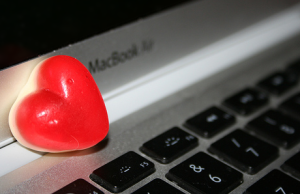Protect Your Mac to Avoid Data Loss Situation
 While most people worry about hackers accessing their Macs over a network, it’s much easier for someone to just walk up to a computer and browse its files. That’s especially true if it’s a laptop, or if it’s in an office, a dorm, or another space where people mill around. Here are eight ways to protect your Mac.
While most people worry about hackers accessing their Macs over a network, it’s much easier for someone to just walk up to a computer and browse its files. That’s especially true if it’s a laptop, or if it’s in an office, a dorm, or another space where people mill around. Here are eight ways to protect your Mac.
1. Turn Off Automatic Login
When you choose automatic login, you get to skip entering your password when you start up your Mac. But automatic login also allows anyone to start up your Mac and access your files. If you have it turned on, go to OSX’s Accounts preference pane, click on Login Options, and deselect Automatically Log In As user name.
2. Require a Password for Waking your Mac from Sleep or a Screen Saver
Your screen saver looks cool and hides your work, but anyone can press a key to deactivate it and get total access to your Mac. The same is true when your Mac is asleep. Protect against this by going to OSX’s Security preference pane and selecting Require Password To Wake This Computer From Sleep Or Screen Saver.
3. Lock Your Keychain
It’s handy that the Mac’s Keychain application stores your passwords for Web pages, network volumes, e-mail accounts, and more. Even better, when you browse the Web, the Keychain can help Safari autofill password fields without asking for any confirmation.
But what happens if you step away from your desk? Someone else could access everything from your online banking site, to your .Mac e-mail, to accounts at online retailers—without needing to know your passwords.
Protect yourself by changing your Keychain settings. Open Keychain Access in the Applications: Utilities folder. Select your keychain (usually your user name) in the drawer (click on Show Keychains in the toolbar if it’s not visible). Then choose Edit: Change Settings For Keychain keychain name. Select Lock After 5 Minutes Of Inactivity, or change the time limit to 1 minute if you’re really paranoid. Then select Lock When Sleeping for more security.
4. Change Your Keychain Password
By default, the Keychain password is the same password you use to log in to your Mac. Even if you’re the only administrator, others could potentially start up your computer with an OS X installation CD and reset the administration password. If they did that, they could reset all the user account passwords and effectively access your keychain. To protect against this, you need a Keychain password that’s different from your user password. Open the Keychain Access application, and select your keychain in the drawer. Select Edit: Change Password For Keychain keychain name, and then enter a new password.
5. Store Your Sensitive Files in an Encrypted Disk Image
If you have only a handful of sensitive files, as opposed to a Home folder chock-full of top-secret information, it’s easy to store them in a password-protected encrypted disk image. When you want to mount an encrypted disk image, you need to enter a password. When you’re finished working with its files, just eject the disk image.
6. Completely Erase Sensitive Files
 If you’ve worked on files that you don’t want others to see, you can delete them when you’ve finished. But they aren’t completely deleted—bits and pieces of your files remain on your hard disk, and some file-recovery programs could let another user access them. To completely delete sensitive files, select Finder: Secure Empty Trash. This not only deletes the files but also overwrites them so no one can get at them with file-recovery software.
If you’ve worked on files that you don’t want others to see, you can delete them when you’ve finished. But they aren’t completely deleted—bits and pieces of your files remain on your hard disk, and some file-recovery programs could let another user access them. To completely delete sensitive files, select Finder: Secure Empty Trash. This not only deletes the files but also overwrites them so no one can get at them with file-recovery software.
7. Use Data Recovery Software&Back Up Service
To protect your Mac, the most important thing must be the data. But if you just lose your files, you need to use data recovery software to recover your lost data. After that you must need to back up your files by using external drive or cloud service so that you won’t meet data loss situation again.
Lots of data recovery tool can help you but here I recommend you to have a try on uFlysoft Mac data recovery. Detailed info you can check other post on our site to know more about this high-efficiency data recovery software.
8. Set an Open Firmware Password
As the truly paranoid know, there are three ways to get around a login password: start up the Mac from an OS X installation CD, boot a Mac in target mode while it’s connected to another Mac, or start up a Mac from a network server. So if someone gets physical access to your Mac and has the right tools, he or she can access anything that’s not encrypted.
If you want to prevent users from gaining such access, you can set a low-level password that must be entered even before your Mac begins booting. Open Firmware is special code that is not part of OS X-it’s actually in a chip in your Mac. Like a PC’s BIOS, this chip runs before anything else at startup.
It’s not infallible, but it provides solid protection when your Mac lives in a location that’s accessible to the public. And you can also visit uFlysoft studio-our official website to share your opinions.
